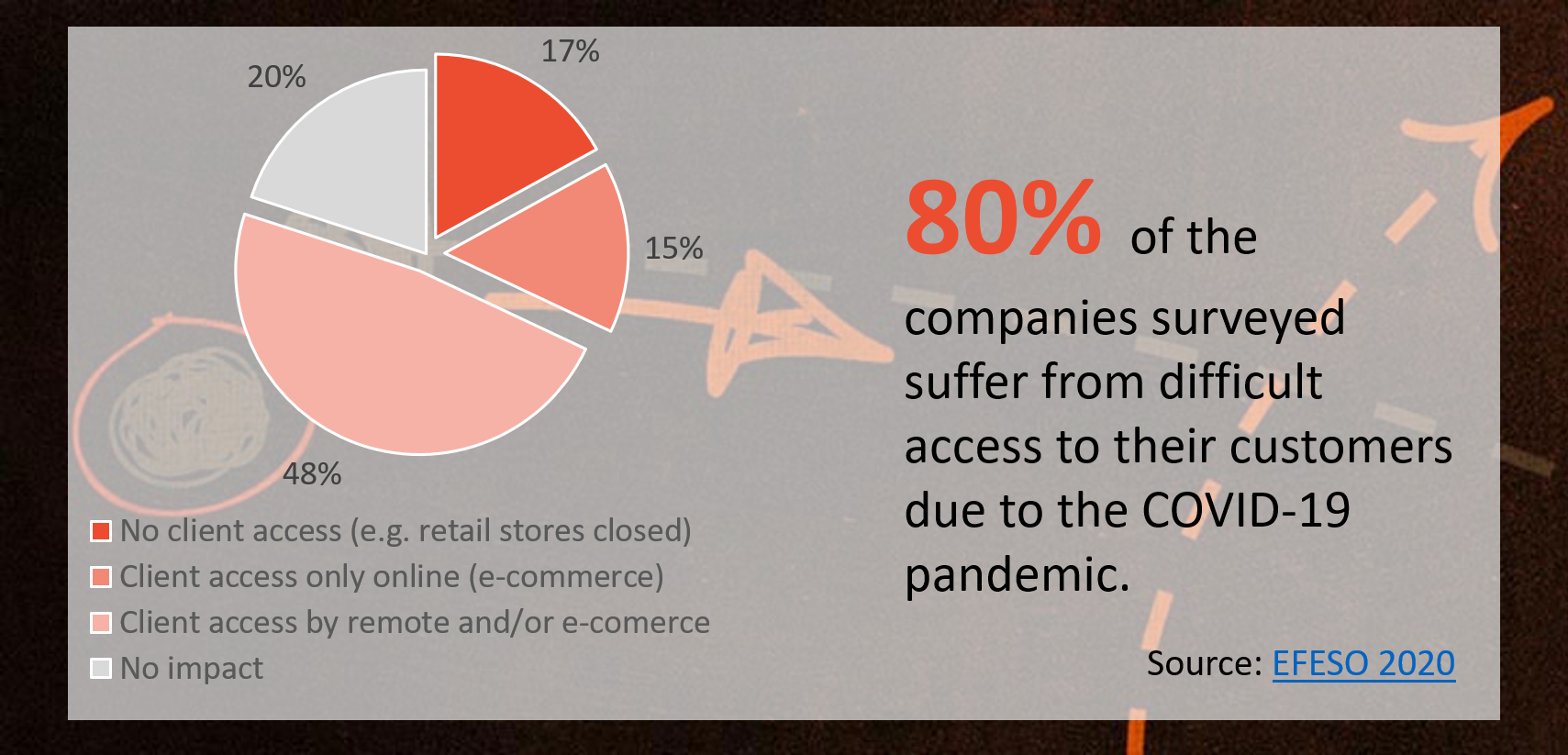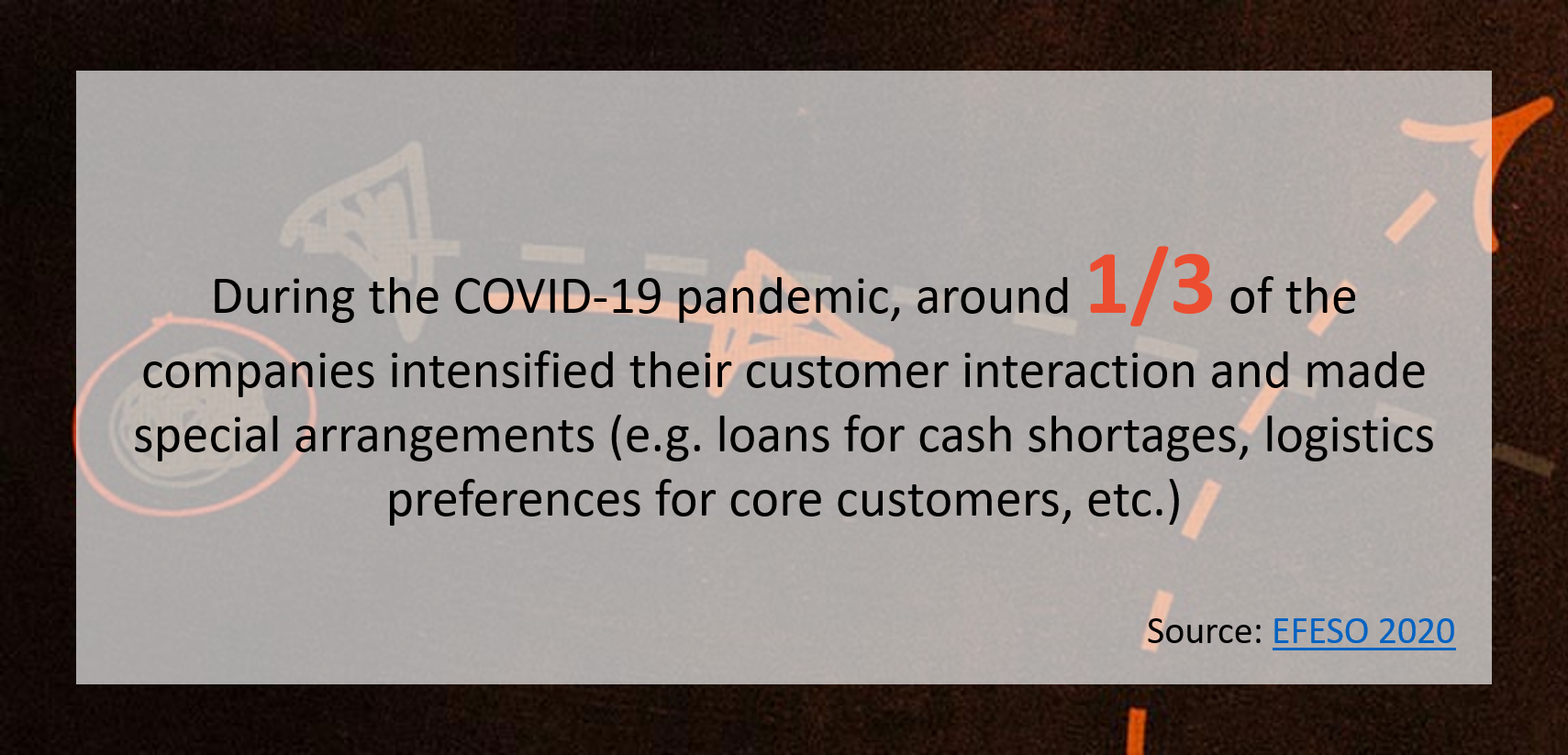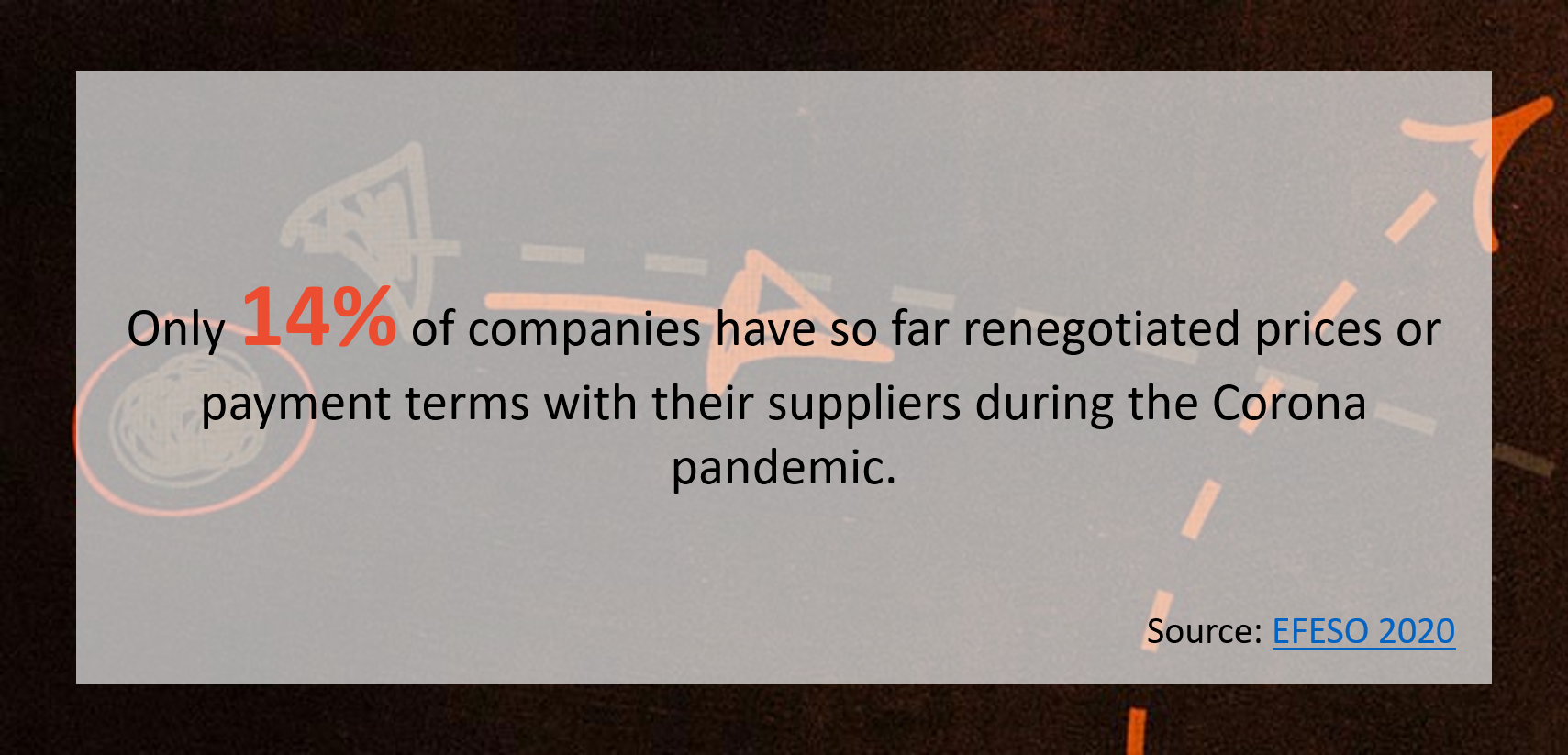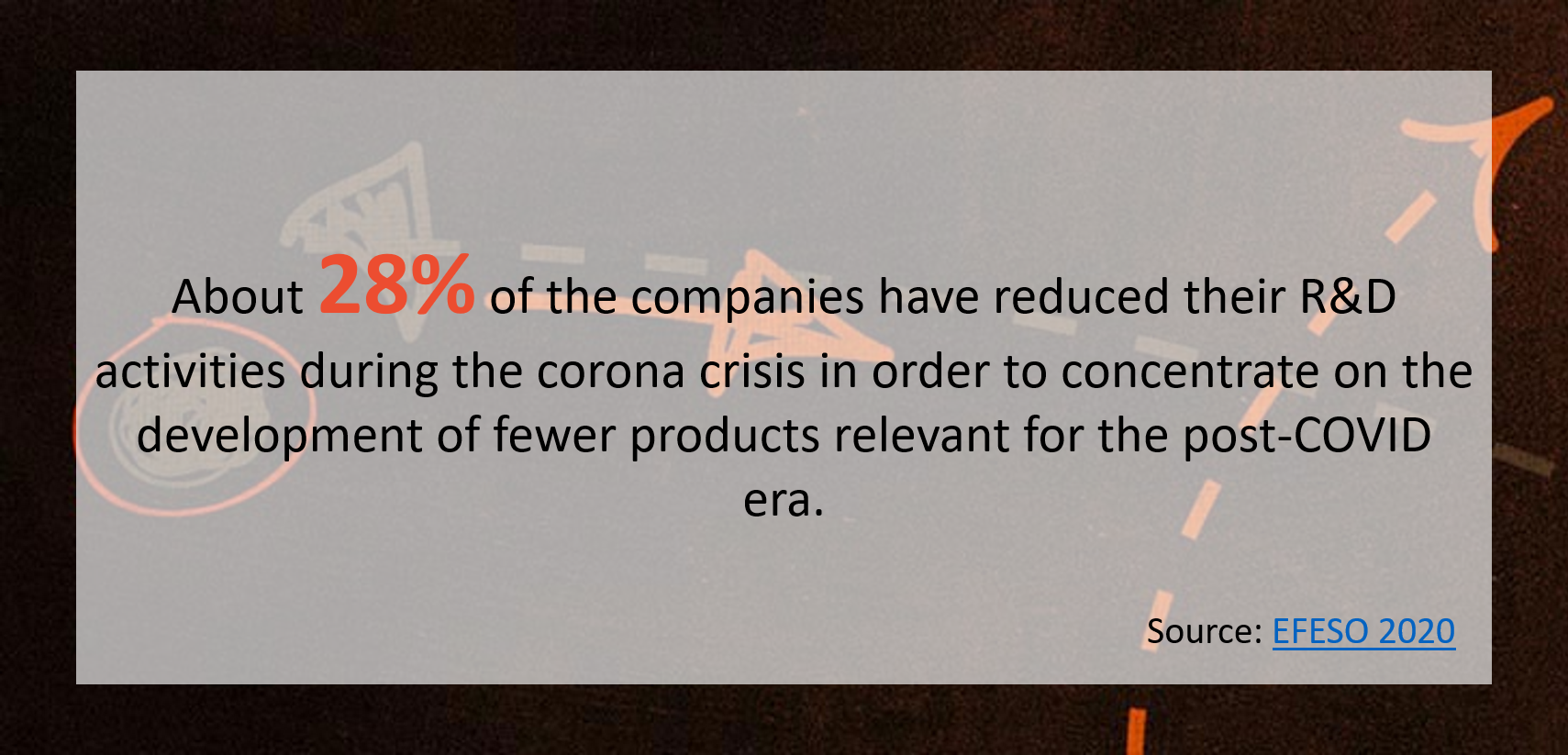#2
Secure Survival
Safeguarding the survival of the core organization is paramount in the crisis. To this end, ongoing operations have to be supported and costs need to be reduced wherever possible in order to ensure liquidity.
What has to be done now
- According to current surveys (cf. EFESO, 2020), 80% of companies suffer from restrictions in contact with customers as a result of the COVID-19 epidemic. Establish and use alternative distribution channels to ensure efficient access to your customers even during the pandemic.

- In a crisis, your customers are only prepared to pay for products and services crucial for their own stability. Identify the critical areas of your customers, how they are affected and what problems they are facing. Once you know your customers' situation, you can assess the current value of your portfolio and develop innovative solutions.
- Contact with customers replaces existing contracts. Contracts and agreements can no longer be honored in the crisis. Flexible and short-term agreements on products that can be delivered may replace previously made agreements on deliveries. Take advantage of this opportunity: Maintaining contact professionally will lead to a deepened customer relationship.

- The crisis will change markets. Use the contact to your customers in order to recognize changes in needs and expectations at an early stage. At the same time, keep an eye on the relevant key figures in sales development to prevent the crisis from being exploited for short-term profits (e.g. price erosion).
- Reduce your purchasing costs in a smart way. Use shifts in the market power of your suppliers to your advantage. In doing so, pay attention to the financial stability of your critical suppliers. Consider options for becoming a shareholder or for vertical integration.

- Identify the hot pots for cash in your corporation. Secure short-term solvency for the next 2-3 months with a tight, central cash management.
- Securing the financial stability must be thought through in long-term scenarios, if the crisis lasts for a longer time. Providing fresh capital in the global crisis will entail considering questions such as how to deal with local insolvencies in the corporation, what financial problems will affect shareholders and debt capital providers, and what potential investors could ensure survival. Only the timely consideration of scenarios can provide the necessary time to prepare.
- The existing Sales & Operations Planning processes are of little use in a global crisis. Statistical forecasting procedures lose their foundation, and previously valid replenishment times are obsolete. Direct contact with customers and suppliers is the only way to maintain an up-to-date overview of the inventories in the supply chain and possible future deliveries.
- Use a supply chain task force, to ensure that divisional boundaries do not impede transparency about the current status and short-term developments in the supply chain. Focus on reacting quickly to short-term changes in the supply situation. Improvisation has to replace optimization.
- Make use of new flexibility in your plant network. Assess the possibilities of your Manufacturing Footprint from the perspective of the crisis and not from the perspective of optimization under stable conditions. In the COVID crisis, the flexibility of staff is as important as the flexibility of technology. Assume that your customers and suppliers will also have to be willing to be more flexible. Local sensitivities of production sites will also take a back seat during the crisis.
- Safeguard the production with social distancing. In addition to the legal requirements, creative ideas are necessary to make the management of the production process and the production itself possible. For example, assembly processes can be redesigned to ensure a minimum distance of 1 meter and new room concepts and shift plans can be developed for indirect areas. The guiding principle is that the infection of an individual employee together with quarantine measures for contact persons may not lead to the shutdown of an entire area of production or function. Also provide masks and equipment for measuring body temperature in accordance with legal requirements.
- Focus production on products critical to the society or the company. Identify the product areas that should and can be maintained in the event of a temporary decrease of staff availability. If possible, shift production capacities to products crucially important for society. Use this opportunity to streamline your portfolio. Consider the impact of the pandemic on the effectiveness of distribution channels and adapt your go-to-market strategy accordingly.
- Put your development portfolio to the test. Not all products will be sought after in the expected manner after the crisis. Use your development capacities to reduce the development time for products that are promising for the time after the crisis and shift the existing program to crisis-proof products for the short term. Your employee potential offers the opportunity to launch products that cannot be provided by their traditional manufacturers due to the failure of global supply chains. For example, a paint manufacturer was able to convert machines to the production of disinfectants in a very short time.

- Support your employees in adjusting the IT infrastructure to home-office work. In many households, the private IT infrastructure reaches the limits of its capacity when the entire family works in home office (distance learning of children, ...).
- The functionality of the organization depends on the functionality of private structures. The COVID crisis affects family structures and can affect the capacities of younger employees in particular. Flexible working hours can offer support here.
- Give your employees space to discover new ways of working. Challenging situations boost ingenuity. Encourage your employees to find new modes of operation outside usual process regulations. Find creative and flexible ways to approve process simplifications. The crisis is an opportunity to develop a lean structure for your organization.
- Identify and promote new best practices. Provide the resources to closely monitor emerging practices and to assess their sustainability. Otherwise, locally emerging best practices are at risk of not being disseminated, especially in the case of reduced capacities.
- Identify your Minimum Viable Organization in the case of massive staff shortages. The loss of capacities forces everybody involved to limit themselves to the functions that are essential for life. The crisis thus offers the opportunity and the necessity to examine and question all corporate functions with regard to their value contribution. The special feature of the crisis is that the employees themselves identify and eliminate the less critical activities. It quickly becomes clear what the critical activities are.
- Assess and manage risks in indirect areas to ensure business continuity, especially when they are outsourced.
- Use the classic approaches for the short-term reduction of costs and expenses. Examine all cost items with zero-base costing. This also applies to contract extensions and leasing contracts. Every manager of a cost center has to justify every expense, which in itself reduces costs dramatically.
- Review debt repayment plans and liabilities and assess credit risks on current receivables.

EFESO
EFESO supports you with highly effective instruments to ensure the vitality of your core organisation, secure liquidity and maintain the ability to act.
COVID-19 RESPONSE PROGRAM
#1
Creating transparency about the possible course of the crisis and its effects on the company
#2
Ensure the vitality of the core organisation, secure liquidity and maintain the ability to act
#3
Set up task force, perform supply chain risk assessment, plan ramp-up scenarios
#4
Ensure fast and error-free ramp-up through actionable task forces
#5
Re-balancing E2E supply chains and sustainably anchoring "minimum viable processes" that have proven themselves in the crisis
#6
Prepare the organization for a world of recurring shocks and disruptions



